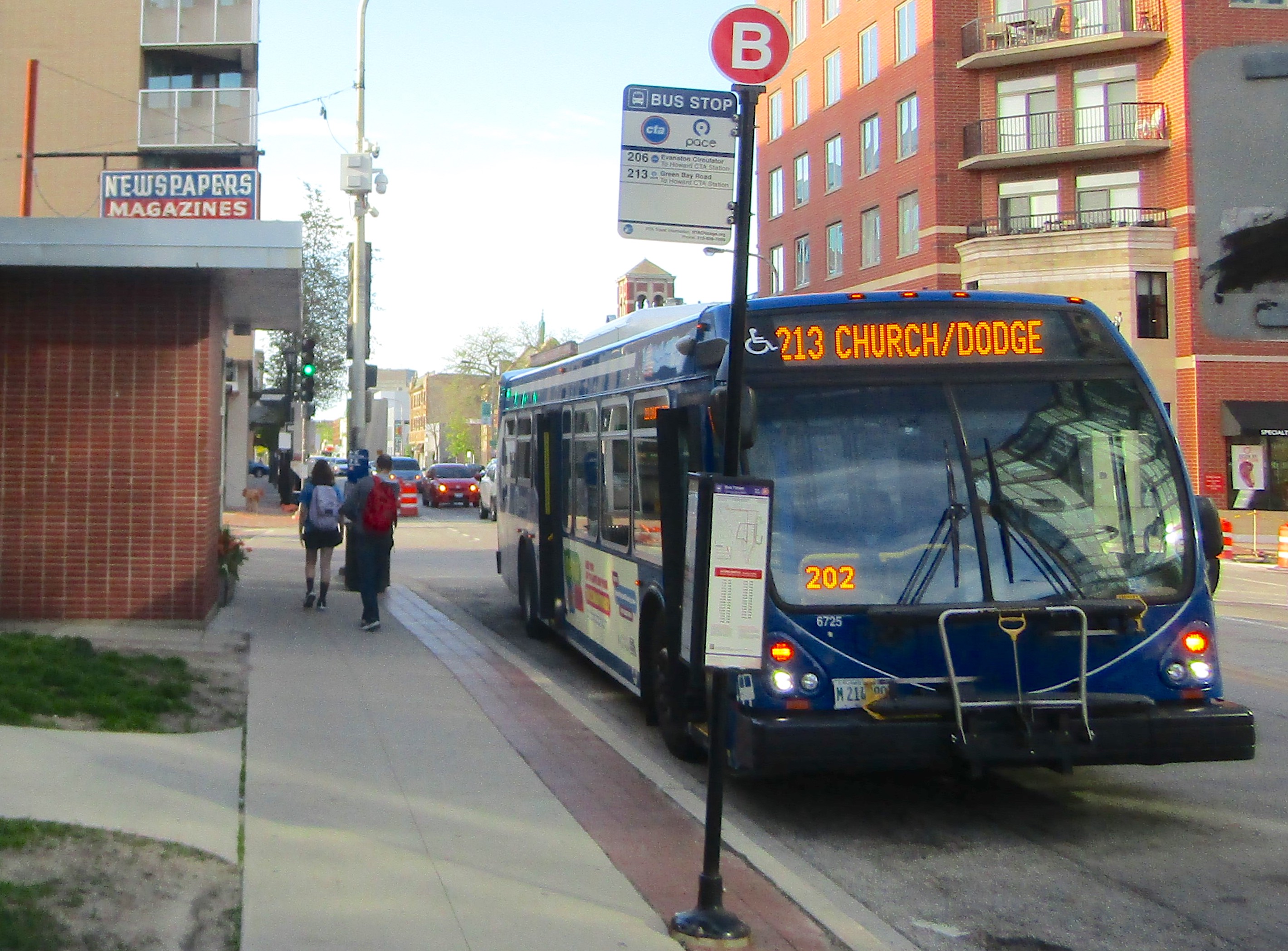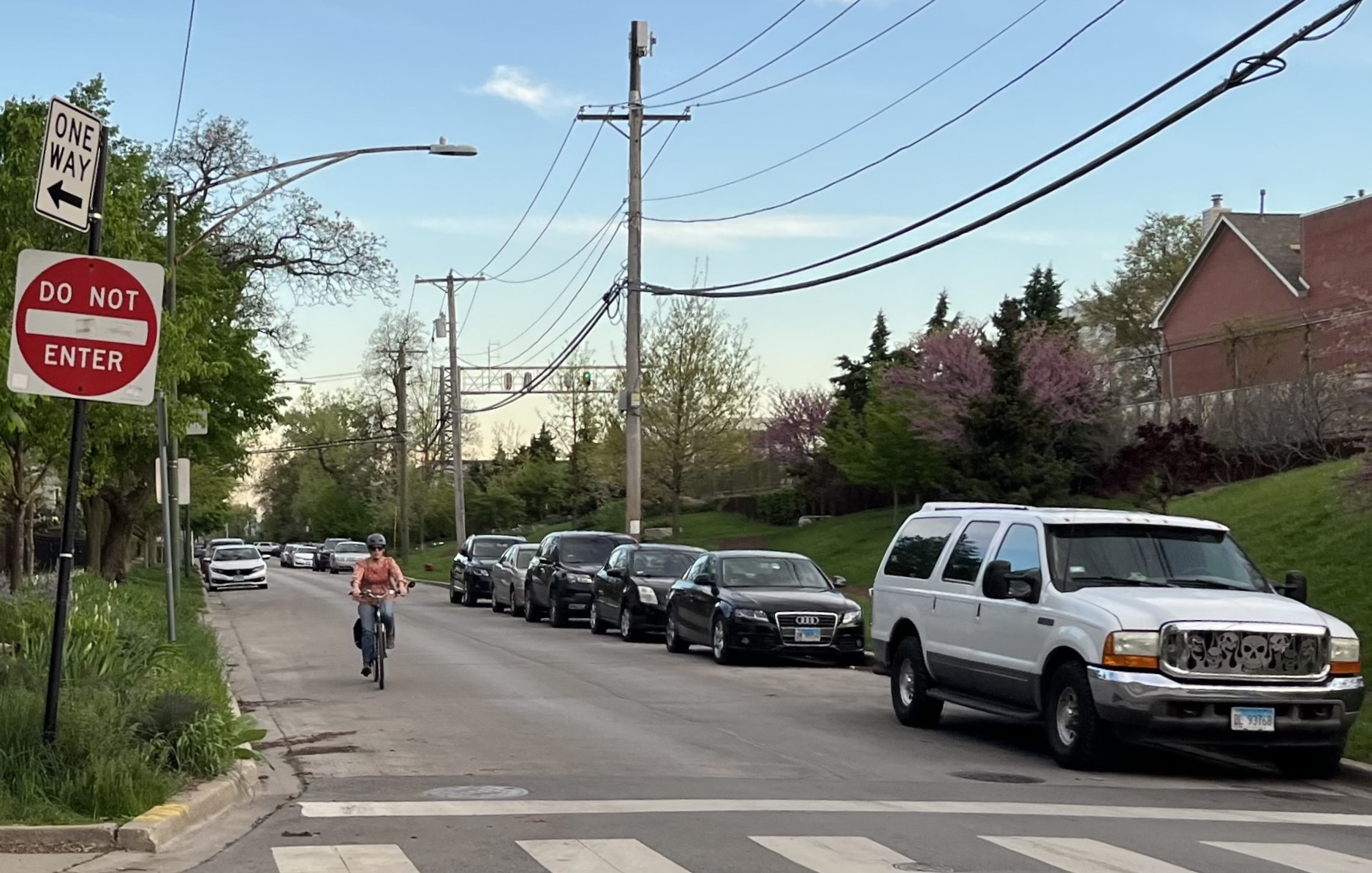As Chicagoland transit faces a fiscal cliff, RTA five-year plan sketches a funding path
5:51 PM CST on December 13, 2022
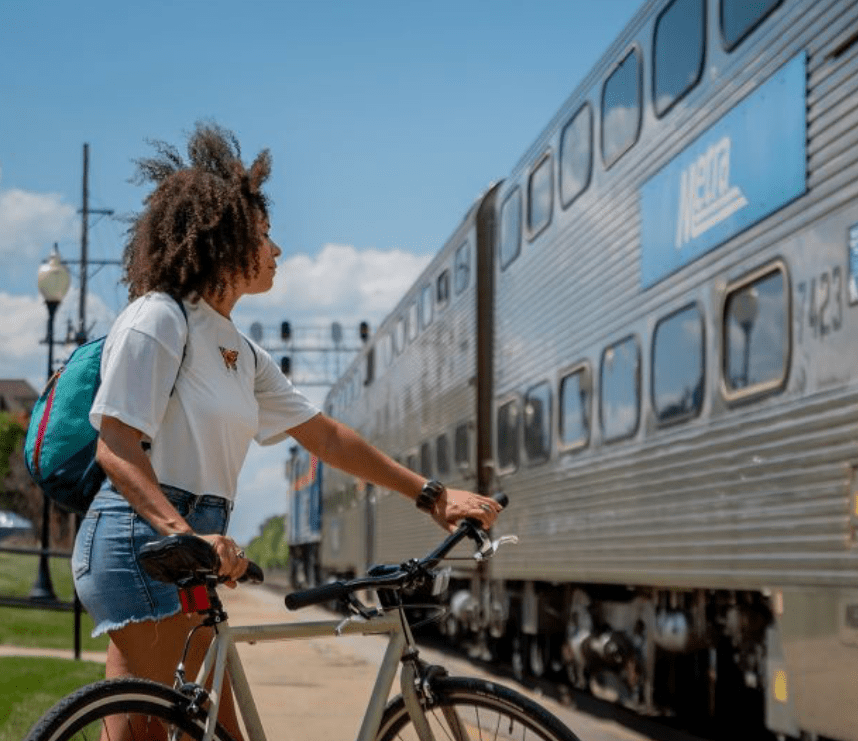
Photo: RTA
On December 5 the Regional Transportation Authority – the agency that oversees CTA, Metra and Pace – released a draft strategic plan outlining its five-year priorities. The document, entitled “Transit is the Answer,” is available on the RTA’s website and is open for public comment through January 9, before the RTA board considers adopting the plan in February.
According to the document, the region’s transit system faces an economic crisis in 2026 when federal Covid relief funding, which has kept local public transportation afloat despite a precipitous drop in ridership during the pandemic, runs out. Assuming ridership remains below 2019 levels in the near future – due primarily to the rise of remote and hybrid work – RTA anticipates a $730 million shortfall in three years. That's a 20 percent budget gap that couldn’t be filled by fare increases and service cuts.
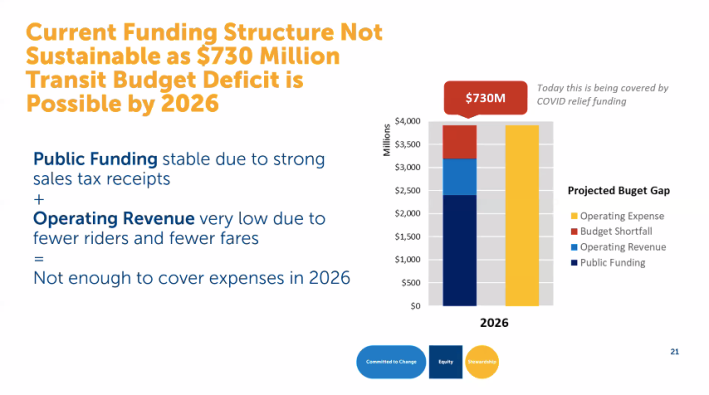
And even if that was a potential solution, the plan rightly points out that raising prices and cutting service would only hamstring the already beleaguered agencies, discouraging ridership further and triggering a transit “death spiral.” For public transportation to thrive, RTA will need to both shore up funding to take the system off emergency life support, while investing in improvements to service, safety, and accessibility.
RTA employed what it refers to as a “big tent” approach to drafting the plan, inviting input from transit advocates, staff, and the general public via stakeholder meetings, hearings, surveys and working groups. The methodology received public critique in February, when seven transportation advocacy groups sent an open letter to RTA, stating dissatisfaction with a workshop they felt was unsubstantive, lacked racial diversity and vision, and presented false choices between financial stability and addressing climate change.
The RTA appears to have taken the feedback to heart. A core planning principle in “Transit is the Answer” changed from “open to change” – which advocates found “deeply troubling” considering the impending financial crisis – to “committed to change.” Equity and stewardship are the other two principles guiding a list of fourteen advocacy and action priorities and a multi-pronged funding approach laid out in the 80-plus page document.
Regarding the fiscal elephant in the room, RTA convened a ten-year financial plan working group that identified eleven funding sources which, in some combination, could fill the budget gap. Some involve increasing revenue from existing sources, like the RTA sales and service taxes, vehicle registration fees, and tolls. Some are entirely new and progressive– notably the implementation of congestion pricing for single passenger vehicles (including single-occupancy private vehicles and taxis and ride-hail vehicles with only one customer.) Whatever mix of funding the RTA pursues, it will doubtless need to include new sources. Currently, transit receives five cents per gallon of the state’s gas tax toward capital budgets. As cars become more fuel efficient and electric vehicles become more widespread, tax revenues from fossil fuel sales will surely decline. One proposed alternative is a vehicle miles traveled tax that would apply to all personal cars.

The plan also calls out Illinois’ unreasonable fare recovery ratio – a state requirement that CTA, Metra and Pace generate 50 percent of their operating budgets through fares and other revenue like advertising and lease of space. Few transit systems in the nation face a similar requirement and the ones that do – namely in New York State and California– have significantly lower requirements than the RTA. This regressive funding model all but ensures Chicagoland’s transit agencies will struggle to meet day-to-day expenses like payroll, not to mention improving service.
On the bright side, the plan states that capital funding – used for rolling stock and infrastructure improvements – is stable for the time being, thanks to the passage of the Rebuild Illinois state infrastructure bill in 2019, which doubled the region’s five-year capital budget, and the federal Infrastructure Investment and Jobs Act. This funding has gone to the rehab of CTA rail cars, the purchase of new Metra cars, and station rehabs, and will go toward the CTA’s south Red Line extension, amongst other projects.
The bulk of “Transit is the Answer” details seven advocacy and seven action areas for RTA – advocacy being longer-term goals and action items immediate areas of improvement. Advocacy areas include securing increased funding for operations, developing a funding structure less reliant on rider fares, building a coalition, supporting communities’ equitable transit-oriented development efforts, engaging communities about how transit dollars are spent, securing increased funding for infrastructure and partnering with transportation departments to build more transit-friendly streets and advance bus rapid transit.
Bus rapid transit speeds up service through infrastructure improvements like dedicated bus lanes, off-board fare payment, raised-platform boarding, and transit signal priority. BRT in other cities has been proven to shorten travel times for passengers and dramatically increase ridership. As noted in the report, Chicago is woefully behind its peers on BRT. New York, LA, Seattle, Miami, Minneapolis, Houston and Phoenix have all installed more than 100 miles of transit-only lanes while Chicago has less than fifteen. The Active Transportation Alliance is campaigning for BRT and cites it as critical to growing ridership while better serving low-income communities that rely on public transportation and have less access to rail lines.
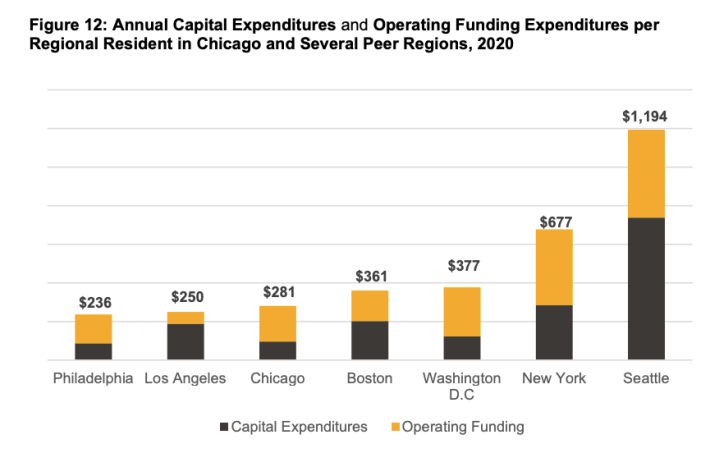
Action areas of the plan include making transit safer, building a fully wheelchair-accessible system, providing accurate travel info for riders, making payment seamless and more affordable, accelerating the transition to near-zero emissions, including considerations for racial equity and mobility justice in capital programming, and adapting to meet the changing needs of riders.
The plan concludes with a statement of desired outcomes, that Chicagoland’s transit system will be safe, accessible and reliable; in good repair; and financially stable; and that the region will be connected, thriving, and winning the fight against climate change – along with a list of performance measures against which progress will be tracked.
On December 7, RTA held a virtual public hearing about the plan and accompanying budget. Peter Kersten, a principal planner with the RTA, gave a brief overview of the plan, highlighting the impending funding cliff and the fourteen advocacy and action areas. The rest of the two-hour session was open to public comments. The first hour was dominated by members of the Climate Reality Project who took issue with CTA’s budgetary allocation for the purchase of 500 diesel buses. Nine attendees in a row, all of whom had emailed interest in commenting in advance, entreated RTA to overrule CTA’s decision and request federal funding for the purchase of electric buses. Other attendees remarked in the chat on the urgency of improving bus service, which accounts for less than 2 percent of transportation emissions, to compete with car ownership over the expense of installing the extensive and expensive charging infrastructure required to electrify CTA’s fleet. One person dropped a link to CTA and CDOT’s Better Streets for Buses plan which explains how BRT improvements can decrease service gaps, bus bunching and traffic delays.
Once the floor opened to attendees who hadn’t reserved time in advance, a wider variety of feedback went on the record. Advocates and other transit users remarked on continued issues with "ghost buses" and unreliable arrival information in the CTA tracker, requested RTA invest in pedestrian and bike safety improvements around Metra stations, encouraged implementation of congestion pricing, and stated support for increased funding for BRT. As one attendee put it, “reliability is the number one criteria and priority of transit. If you’re not doing that, you’re not operating a service.”
RTA’s “Transit is the Answer” draft strategic plan and proposed budget are available and open for public comment through January 9.
Stay in touch
Sign up for our free newsletter
More from Streetsblog Chicago
Since COVID, Pace ridership has fared better on major corridors and in north, northwest suburbs than in south, west ‘burbs
The suburban bus system's top five busiest routes largely maintained their ridership rankings.
Due to incredible support from readers like you, we’ve surpassed our 2023-24 fundraising goal
Once again, the generosity of walk/bike/transit boosters is fueling our reporting and advocacy.
Which Metra corridor would become more bike-friendly and greener under a new plan? Ravenswood!
Thanks to plans to convert little-used parking spaces, the avenue is slated to get a new bike lane, and the Winnslie Parkway path and garden will be extended south.
